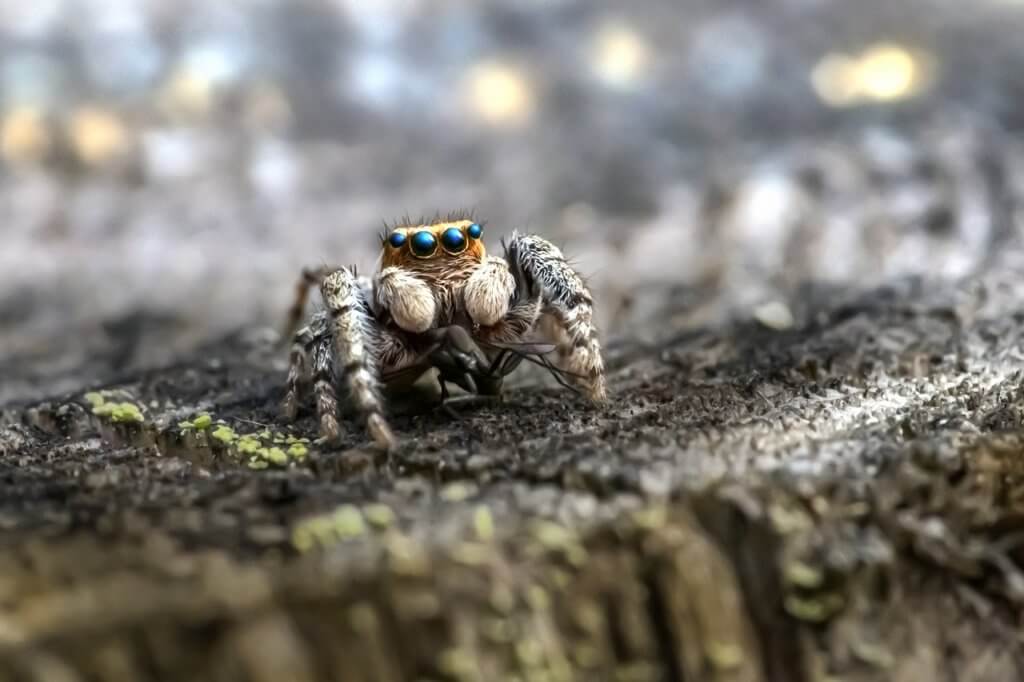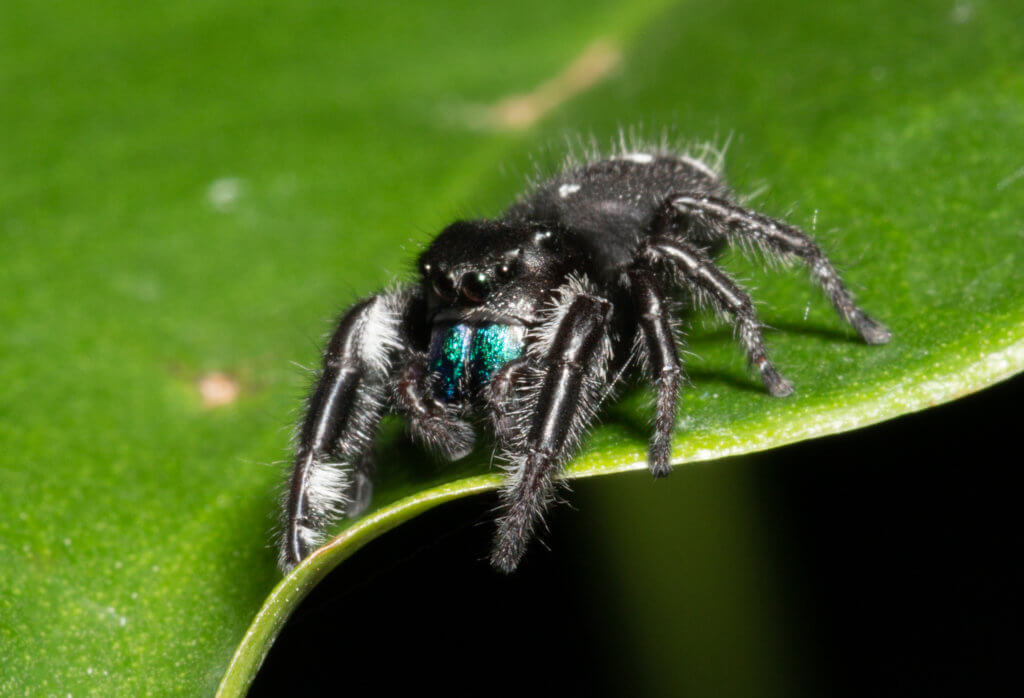While the simple answer is yes, jumping spiders do bite, there’s more you need to know. Read on for the important information you need about jumping spiders.
Are Jumping Spider Bites Dangerous
In some cases, jumping spiders will bite in defense, but their bite is not poisonous. As such, jumping spiders are not considered a large danger to humans, especially given that these spiders are more likely to run away from people than attack them. Jumping spiders do possess fangs and produce venom, but the venom is not a medical threat. So, while they can bite, the jumping spider bite is not poisonous, so they are not considered dangerous.
What Do I Do if I Get Bitten by a Jumping Spider
Although jumping spider bites are uncommon, they can happen. You may experience redness, itching, stinging, and swelling. If you suspect a jumping spider has bitten you, clean the site with soap and water. Then, apply a cold compress over the spider bite location. Adults can also take aspirin or acetaminophen and antihistamines to relieve minor symptoms. However, if symptoms continue to worsen for more than 24 hours, it’s crucial to seek medical attention since it may be a sign of an allergic reaction. If possible, bring the spider to the doctor for proper identification and treatment.

Jumping spiders are unlikely to infest a home, as they prefer outdoor environments with plentiful vegetation and sunlight, such as grassland and prairies. In these locations, they feast on bollworms, cotton leaf worms, webworms, cotton flea hoppers, stinkbugs, leafhoppers, and mosquitoes. On occasion, jumping spiders might gain entry indoors via clothing or plants that are brought inside. Should they get in, their retreats may be built under furniture, in drapery folds, between books on bookshelves, in cracks found in wood floors, around door and window molding, etc. Outside retreats may be found under loose bark, between leaves, etc. Indoors, spiders will usually be found hunting around windows and doors because more insects are attracted to these areas and their vision is best in sunlit areas. Outdoors, jumping spiders are commonly seen running over tree bark, under stones and boards, on bushes, fences, decks, and the outside of buildings, especially sunny areas.
What Do Jumping Spiders Look Like

Jumping spiders are commonly mistaken for black widow spiders due to their compact black bodies with relatively short legs. However, jumping spiders can also be brown, tan, or gray in color with pale white, gray, yellow, red, blue, or green markings. Adult jumping spiders range in size from about 1/8-3/4″ and are typically covered in dense hairs or scales that are brightly colored or iridescent. Their front legs are usually thicker and somewhat longer than their other legs. In general, jumping spiders have the best vision of any spider species, being able to detect and react to movement up to 18″ in the distance. However, their night vision is very poor. They have eight eyes in three rows. The front row has four eyes with a very large middle pair. They’re kind of cute if you’re into that type of thing.
So now we know jumping spiders can bite but usually won’t. And even if they do, it’s not dangerous unless you’re allergic (which is rare). We also know they prefer being outside so chances are, they won’t be in your house. They aren’t dangerous, they don’t want to be in your home, and they eat a bunch of other insects – they’re the best kind of spider!